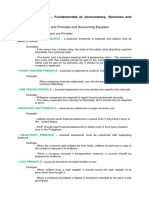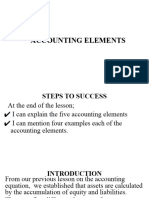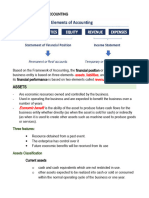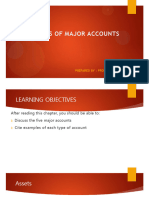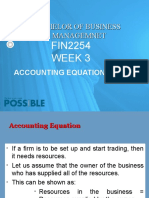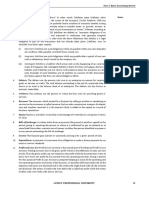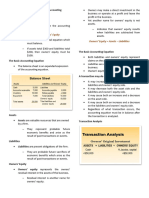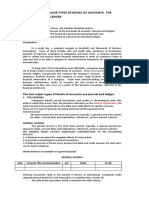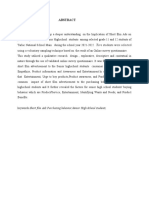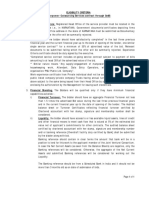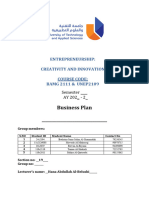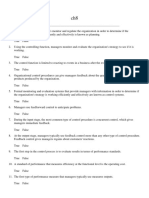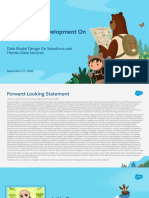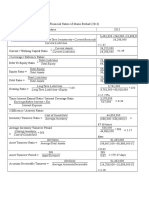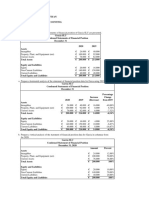0% found this document useful (0 votes)
171 views5 pagesModule 4 - Accounting Equation
The document discusses the accounting equation and its elements. The accounting equation is assets = liabilities + equity. Assets are things owned that will provide future benefit, liabilities are obligations or debts owed, and equity is the owner's claim on assets. The accounting equation must always balance, meaning assets must equal liabilities plus equity. Several examples of transactions are provided and the effects of each transaction on the elements of the accounting equation (assets, liabilities, equity) are shown.
Uploaded by
gerlie gabrielCopyright
© © All Rights Reserved
We take content rights seriously. If you suspect this is your content, claim it here.
Available Formats
Download as DOCX, PDF, TXT or read online on Scribd
0% found this document useful (0 votes)
171 views5 pagesModule 4 - Accounting Equation
The document discusses the accounting equation and its elements. The accounting equation is assets = liabilities + equity. Assets are things owned that will provide future benefit, liabilities are obligations or debts owed, and equity is the owner's claim on assets. The accounting equation must always balance, meaning assets must equal liabilities plus equity. Several examples of transactions are provided and the effects of each transaction on the elements of the accounting equation (assets, liabilities, equity) are shown.
Uploaded by
gerlie gabrielCopyright
© © All Rights Reserved
We take content rights seriously. If you suspect this is your content, claim it here.
Available Formats
Download as DOCX, PDF, TXT or read online on Scribd
/ 5








